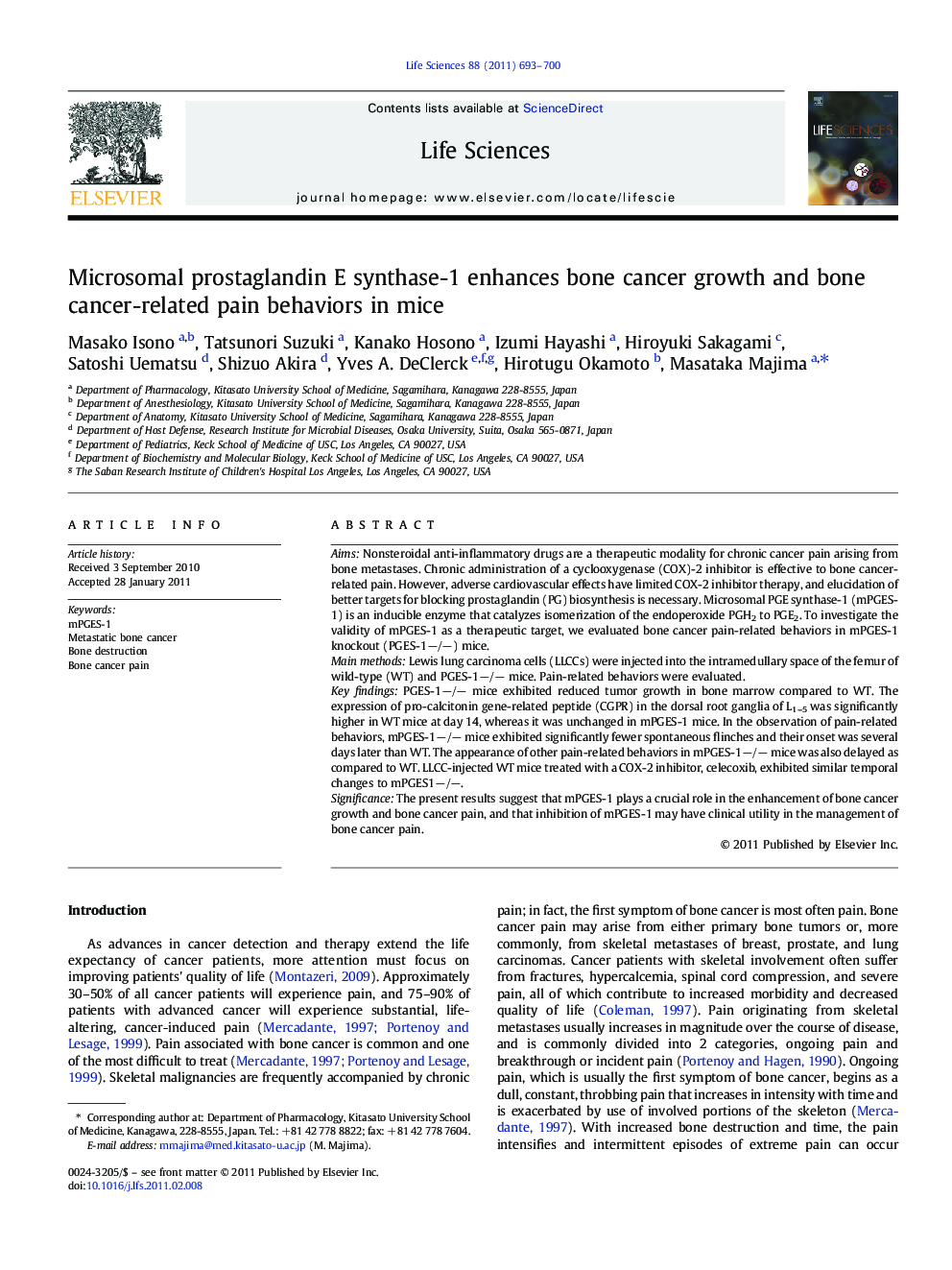| Article ID | Journal | Published Year | Pages | File Type |
|---|---|---|---|---|
| 2551888 | Life Sciences | 2011 | 8 Pages |
AimsNonsteroidal anti-inflammatory drugs are a therapeutic modality for chronic cancer pain arising from bone metastases. Chronic administration of a cyclooxygenase (COX)-2 inhibitor is effective to bone cancer-related pain. However, adverse cardiovascular effects have limited COX-2 inhibitor therapy, and elucidation of better targets for blocking prostaglandin (PG) biosynthesis is necessary. Microsomal PGE synthase-1 (mPGES-1) is an inducible enzyme that catalyzes isomerization of the endoperoxide PGH2 to PGE2. To investigate the validity of mPGES-1 as a therapeutic target, we evaluated bone cancer pain-related behaviors in mPGES-1 knockout (PGES-1−/−) mice.Main methodsLewis lung carcinoma cells (LLCCs) were injected into the intramedullary space of the femur of wild-type (WT) and PGES-1−/− mice. Pain-related behaviors were evaluated.Key findingsPGES-1−/− mice exhibited reduced tumor growth in bone marrow compared to WT. The expression of pro-calcitonin gene-related peptide (CGPR) in the dorsal root ganglia of L1–5 was significantly higher in WT mice at day 14, whereas it was unchanged in mPGES-1 mice. In the observation of pain-related behaviors, mPGES-1−/− mice exhibited significantly fewer spontaneous flinches and their onset was several days later than WT. The appearance of other pain-related behaviors in mPGES-1−/− mice was also delayed as compared to WT. LLCC-injected WT mice treated with a COX-2 inhibitor, celecoxib, exhibited similar temporal changes to mPGES1−/−.SignificanceThe present results suggest that mPGES-1 plays a crucial role in the enhancement of bone cancer growth and bone cancer pain, and that inhibition of mPGES-1 may have clinical utility in the management of bone cancer pain.
